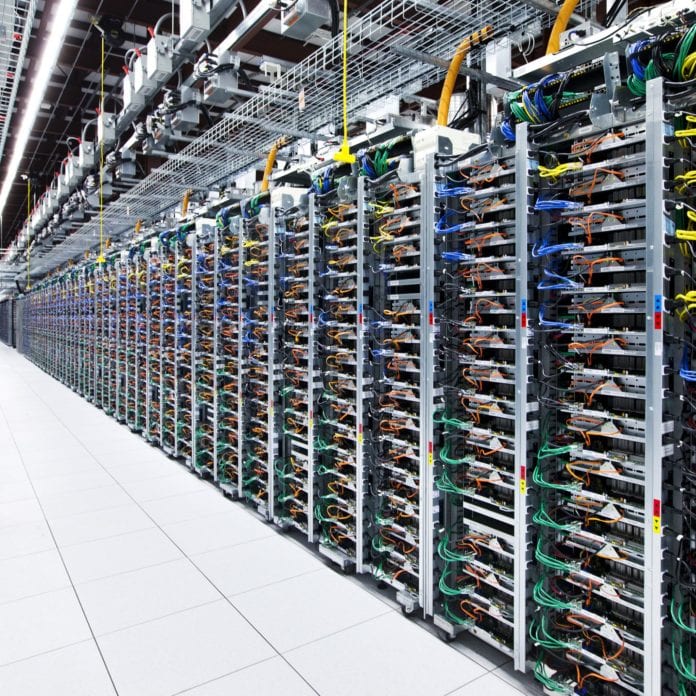Building out a wireless network is expensive, and most of the CAPEX is related to the radio access network (RAN) segment, reaching as high as 80% of total network cost.
For decades, operators have been “locked in” to legacy RAN vendors, like Huawei, Ericsson and Nokia, because these suppliers not only provide the hardware but also the software that controls it. This means that the technology is largely incompatible with competing vendors. Since the beginning of time the major vendors have thoroughly enjoyed a monopoly of the supply of new hardware (and software) with each new generation of telecoms technology, and have been able to demand costly maintenance and upgrade charges.
Every time operators create a new network to support the latest connectivity standard, it becomes harder and harder to recoup the costs in the form of increased ARPU or new revenue streams. Customers naturally assume upgrades to their services and don’t want to pay more to get them. Therefore, any reduction in the network equipment, and especially the RAN equipment cost, significantly helps the bottom line of wireless operators as they continue to roll out new networks such as 5G.
This is why the industry has gotten so excited by the promise of Open RAN, an initiative to create multi-vendor, software-based RANs, run on general-purpose hardware. This model introduces an open interface between the radio components – the remote unit (RU), centralised unit (CU) and distributed unit (DU) – using software defined functions. By driving features and functionality into software, instead of tightly coupled hardware and software, CSPs can enjoy flexibility and faster innovation cycles by deploying software, instead of installing new hardware.
Make no mistake: Open RAN is a HUGE IDEA. Mavenir, Parallel Wireless and Altiostar are three of the main vendors driving innovation in Open RAN. And CSPs are starting to adopt it and test out this new technology, including Vodafone, Telefónica and Rakuten, creating credibility and momentum. Such is the momentum behind OpenRAN that Ericsson recently released a blog suggesting it could open the door to security risks. Now, I wonder why Ericsson would want to cast doubt over Open RAN? 🤔
Remember that when there is a new innovation in software, such as Open RAN, it’s not too long before the sharks start sniffing blood. Almost any type of software service can be hosted in the public cloud, provided it’s secure and fast enough. Being the preeminent thinking on all things public cloud in telco I wonder: Is Open RAN and the move towards software-defined telecoms networks an opportunity for the hyperscalers?
Major changes to network architecture take time, and telcos are historically slower than London traffic in the snow, to do anything. A case in point is the potential disruption of Huawei’s ban in the U.S. and U.K., which has seen C-level executives across the industry coming out to almost beg governments to reconsider, due to the amount of time and cost it will take to fully replace Huawei equipment.
OpenR AN is undoubtedly going to have a huge impact on the telecoms industry, but it is still some time before the technology has a widespread impact. This period of transition is one of the big reasons why there is potential for the hyperscale cloud providers to turn the industry on its head.
Open RAN opens up to the hyperscalers
There is nothing stopping the software, from the likes of Parallel and Mavenir, used to manage the Open RAN architecture, from being hosted in the public cloud. Given recent announcements from AWS and Microsoft Azure in support of telco initiatives, plus the news that Telefonica Germany has partnered with Rakuten on Open RAN and is already using AWS to virtualise its 5G core, hyperscalers may already have an eye on the opportunity here. The fact that one of the main bodies advancing talks of Open RAN, TIP, was founded by Facebook, tells you everything you need to know – telco is ripe for disruption and new players are chomping at the bit to get in on it.
It would certainly be a savvy business maneuver if a public cloud provider looked to either acquire one of the major Open RAN players, or set-up an exclusive partnership with one, enabling the delivery of ‘Open RAN as-a-service’. The Open RAN software would benefit from the cost-savings of the public cloud environment, as well as the continued investment that the public cloud players typically make into their service offerings – seamlessly delivering improvements and features. This could, over time, make it a lot easier for telcos of all sizes to simply plug into Open RAN software and tap into the broader ecosystem of development.
Public cloud providers may also have an eye on the Open RAN pie, because the disaggregated software, featured in the CU of the RAN, can be hosted in the public cloud. Ericsson, in another recent blog which discusses Open RAN in a more positive light, has suggested that to realize OpenRAN at scale, it means service providers ‘leveraging cloud technologies and web-scale paradigms which leads us to Cloud RAN’.
Cloud RAN, as Ericsson puts it, refers to realizing RAN functions over a generic compute platform instead of a purpose-built hardware platform and managing the RAN application virtualization using cloud-native principles. This begins with running selected 5G RAN network functions in containers through Commercial off-the-shelf (COTS) hardware platforms – i.e. in the cloud, and I’m pretty sure Ericsson is referring to running it in their own cloud as opposed in a hyperscale cloud. But they indicate that RAN functions can be realized as microservices in containers over bare metal servers, supported by technologies such as Kubernetes.
Telcos could, therefore, generate cost savings and massive flexibility benefits by moving the software that is not transactional (to begin with, this could be the CU) into a public cloud environment, rather than having to build their own distributed servers to host and manage the software in a private environment.
By both delivering the Open RAN management software, and hosting the RAN network software together, public cloud providers could become a very valuable partner to the telcos. They can become a single service provider that can be held completely accountable for the software element of the RAN. This may be what telcos need to generate the confidence to start rolling out Open RAN architectures in earnest.
Moving more and more functionality into software drives efficiency up and costs down. As we have seen many times before, software eats the world, and it feasts on proprietary hardware best. The continued rollouts of 5G networks and Open RAN’s role will be fun to watch, but don’t be surprised if the disruptors end up getting disrupted.


